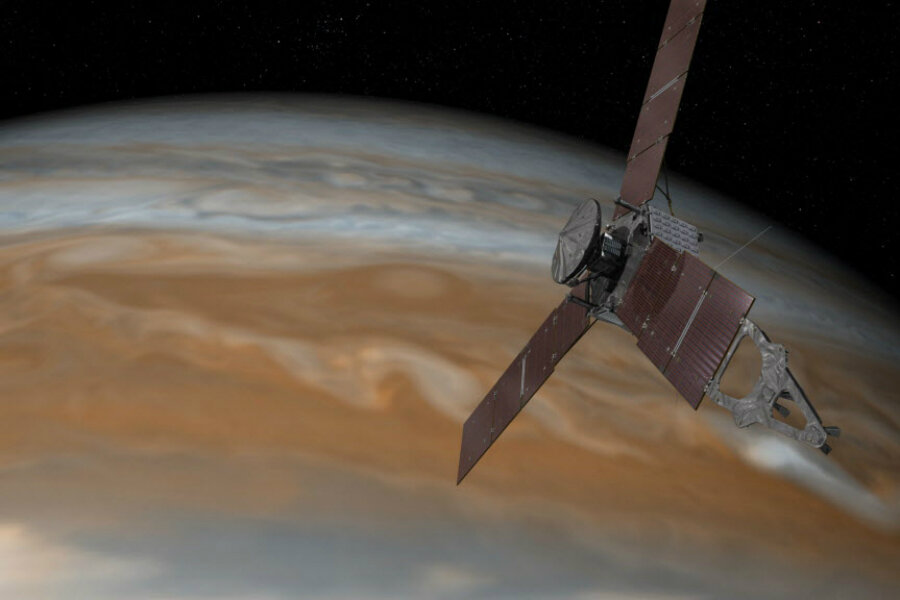Engine troubles prompt NASA's Juno spacecraft to change plans
Loading...
After encountering engine troubles on Sunday, NASA researchers have adjusted Juno’s orbit plan.
The probe was originally scheduled to fire up its main rocket on Wednesday, reducing its orbital period around Jupiter from 53 days to just 14. Officials chose to initiate the “period reduction maneuver” (PRM) in order to study Juno’s fuel pressurization system, but technical difficulties forced them to postpone.
“Telemetry indicates that two helium check valves that play an important role in the firing of the spacecraft's main engine did not operate as expected during a command sequence that was initiated yesterday,” said Rick Nybakken, Juno project manager at NASA's Jet Propulsion Laboratory, in a Friday statement. “The valves should have opened in a few seconds, but it took several minutes. We need to better understand this issue before moving forward with a burn of the main engine.”
NASA scientists and Lockheed Martin consultants have decided to delay the PRM by at least one orbit. A main engine burn will be most efficient when Juno orbits at its closest point to Jupiter, so the probe likely won’t get the boost until Dec. 11.
But it’s not all bad news. The delay, while unexpected, will provide additional opportunities for Juno to collect data from the gas giant. Officials originally planned to shut off many of the spacecraft’s science instruments for the Oct. 19 flyby, but those instruments will be actively collecting data now that the PRM has been postponed.
“It is important to note that the orbital period does not affect the quality of the science that takes place during one of Juno's close flybys of Jupiter,” said Scott Bolton, the principal investigator of Juno from the Southwest Research Institute in San Antonio. “The mission is very flexible that way. The data we collected during our first flyby … was a revelation, and I fully anticipate a similar result from Juno's October 19th flyby.”
On August 27, after two months of orbit, Juno approached its closest point to Jupiter – just 2,600 miles above the planet’s atmosphere. All eight science instruments, including the spacecraft’s JunoCam, were active for the 130,000 m.p.h. flyby.
"The craft's first six-hour-long sweep from Jupiter's north pole to south pole has yielded some startling results," The Christian Science Monitor's Noelle Swan reported at the time, "including storms 'unlike anything previously seen on any of our solar system's gas-giant planets,' ... the first-ever glimpse of the planet's southern aurora, and 'ghostly-sounding transmissions emanating from above the planet.' "
Juno is the first spacecraft to venture into Jupiter’s neighborhood on solar power alone. Jupiter’s distance from the sun proved a challenge for previous craft, which relied on nuclear power to reach the gas giant. Juno will complete 36 orbits around the planet before being decommissioned.








